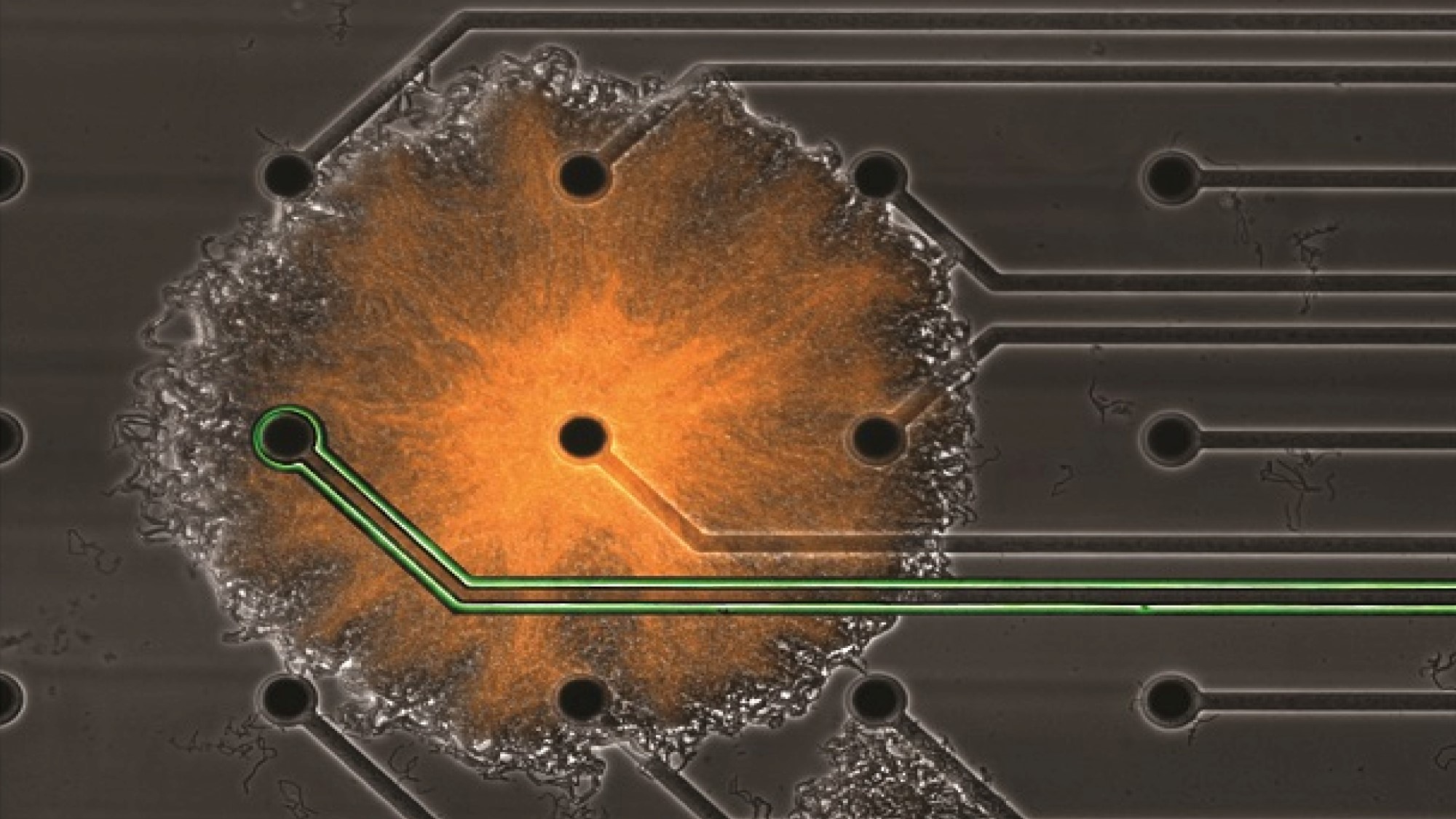A scientific team from the University of California, San Diego, together with the Department of Medicine and Life Sciences (MELIS-UPF) has developed a new technology to control bacterial communities in biofilms, which are often highly resistant to antibiotics. It is a technique that uses electrical discharges to modify the bacterial growth of these communities.
Biofilms are colonies of bacteria that can grow on surfaces ranging from our skin to sewer pipes. They are communities made up of genetically identical cells, but with specialised functions. Thus, within a biofilm we find bacteria that are responsible for forming the matrix or glue that holds the colony together and bacteria that participate in the mobility and establishment of the biofilm. To maintain the viability of these microbial communities, it is necessary to maintain a balance between the different cell types; otherwise the biofilm could become too rigid or, on the contrary, disintegrate.
In this study, biofilm growth was controlled by varying the proportion of different cell types. This is due to the development of a novel microfluidic device that, combined with a multi-electrode array, allows localised electric shocks to be applied. In this way, the motile cells are able to multiply more easily than those in the matrix, causing the biofilm to become insufficiently cohesive and disintegrate.
One of the keys to this effect is the role of ions in cell function. Jordi Garcia Ojalvo, professor of Systems Biology at the UPF and author of the study, explains that “the regulation of bacterial behaviour by controlling their ionic composition is still little known”. And his colleague Colin Comerci, first author of the study, adds that “the electrochemical signals we use are similar to the signals used during development in more complex organisms such as frogs, fish or even humans. So our findings may offer analogies to other biological systems”.
This finding provides a new tool for the control of biofilms by modifying their composition and development. In this way, it should be possible to destabilise these bacterial communities and remedy the high resistance of biofilms to antibiotics.
Comerci et al. Localized electrical stimulation triggers cell-type-specific proliferation in biofilms. Cell systems, May 2022. DOI: 10.1016/j.cels.2022.04.001.







